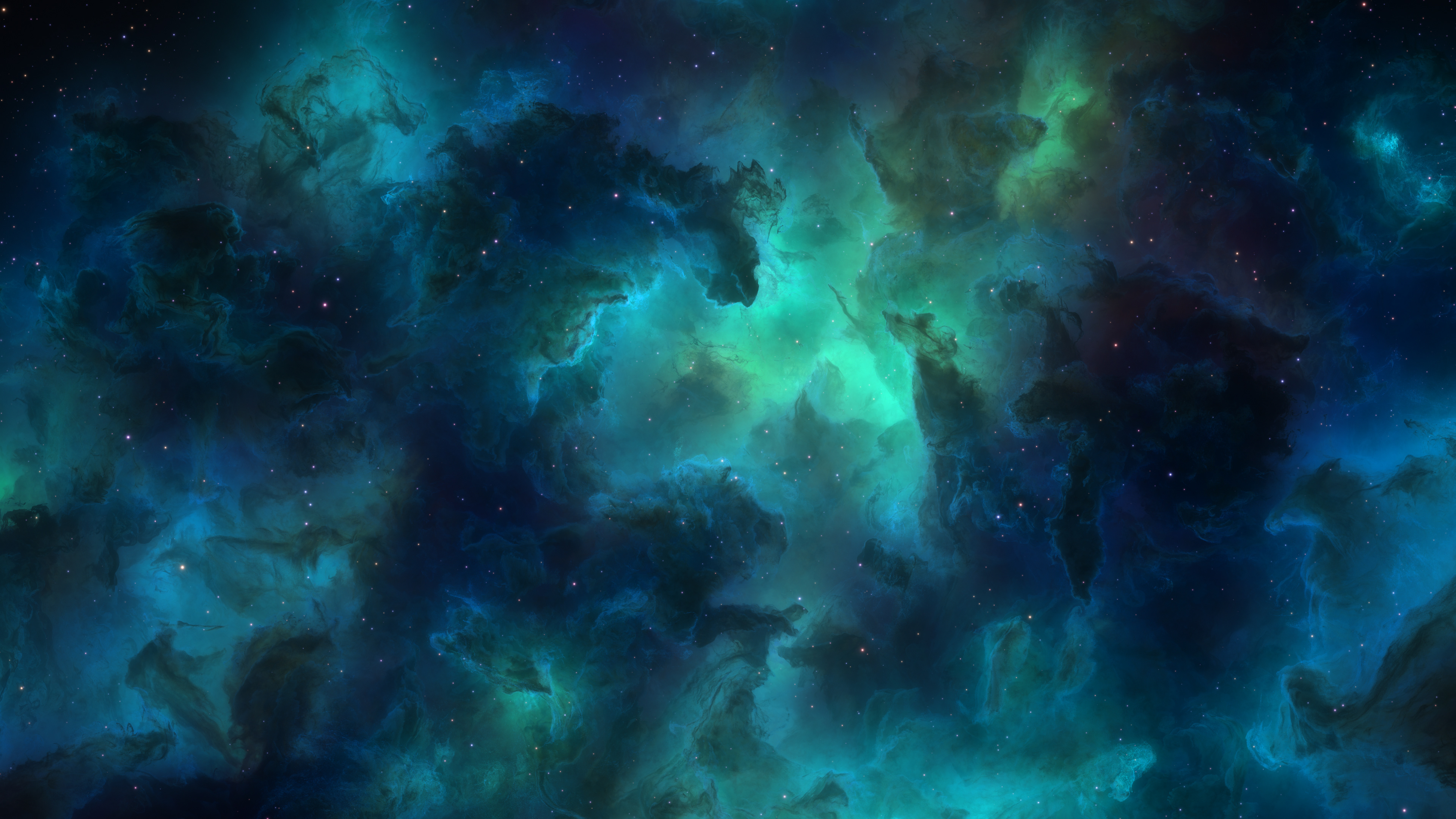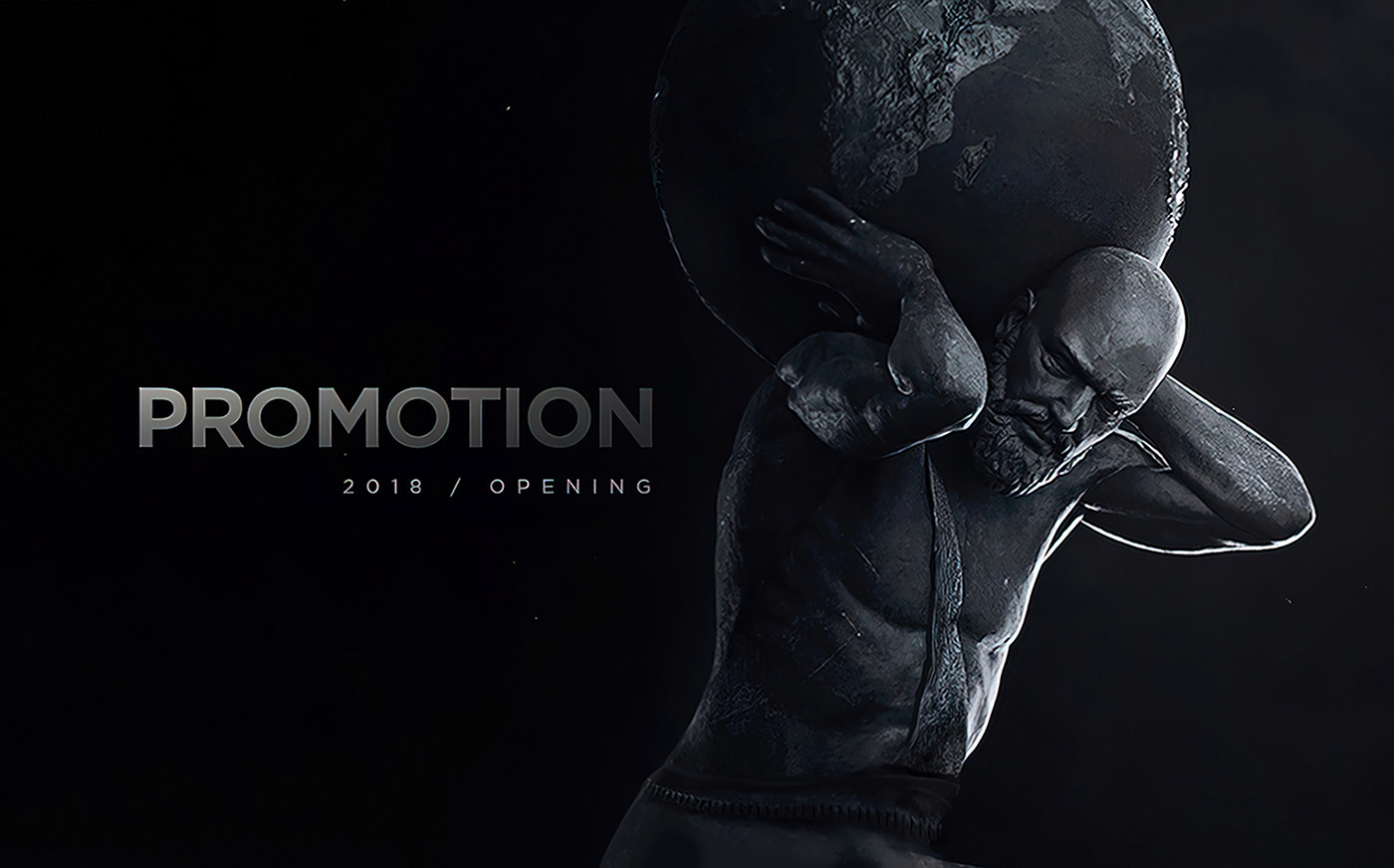
International Transport and Logistics Forum «PRO//Motion.1520» – the main platform for dialogue between representatives
of the transport industry, the state, the investment community and experts
The client set a task for our team to come up with an opening video that would create a sense of historical importance of the transport industry for the viewer, and give him an understanding of the current challenges facing the industry as well as would add aspirations to the technological future for the forum delegates
Agency: MOTIVE agency&production
CGI Studio: WOLUME
Producer: Sergei Gorkov, Supervisor: Viktor Aleksandrovsky
Artists: Viktor Aleksandrovsky, Damir Valshin, Andrey Obukhov, Artem Clyde
Artists: Viktor Aleksandrovsky, Damir Valshin, Andrey Obukhov, Artem Clyde
Stage Scene: Andrey Obukhov, Sound Design: Daniil Grigorev

We decided to begin our story with the image of a person overcoming obstacles and hardships. As a symbol, we chose Atlas – a mighty titan holding a firmament on his shoulders. The firmament in the real sculptures of the ancient world is depicted as a celestial sphere. We decided to replace it with Earth to create a metaphor of home he carries with him. The image of the planet also conveyed the meaning of the phrase “the future of generations in the hands of man”. The first scene showing exhibition in the museum and immediately sets the atmosphere and attracts the viewer's attention before moving on to the intro part
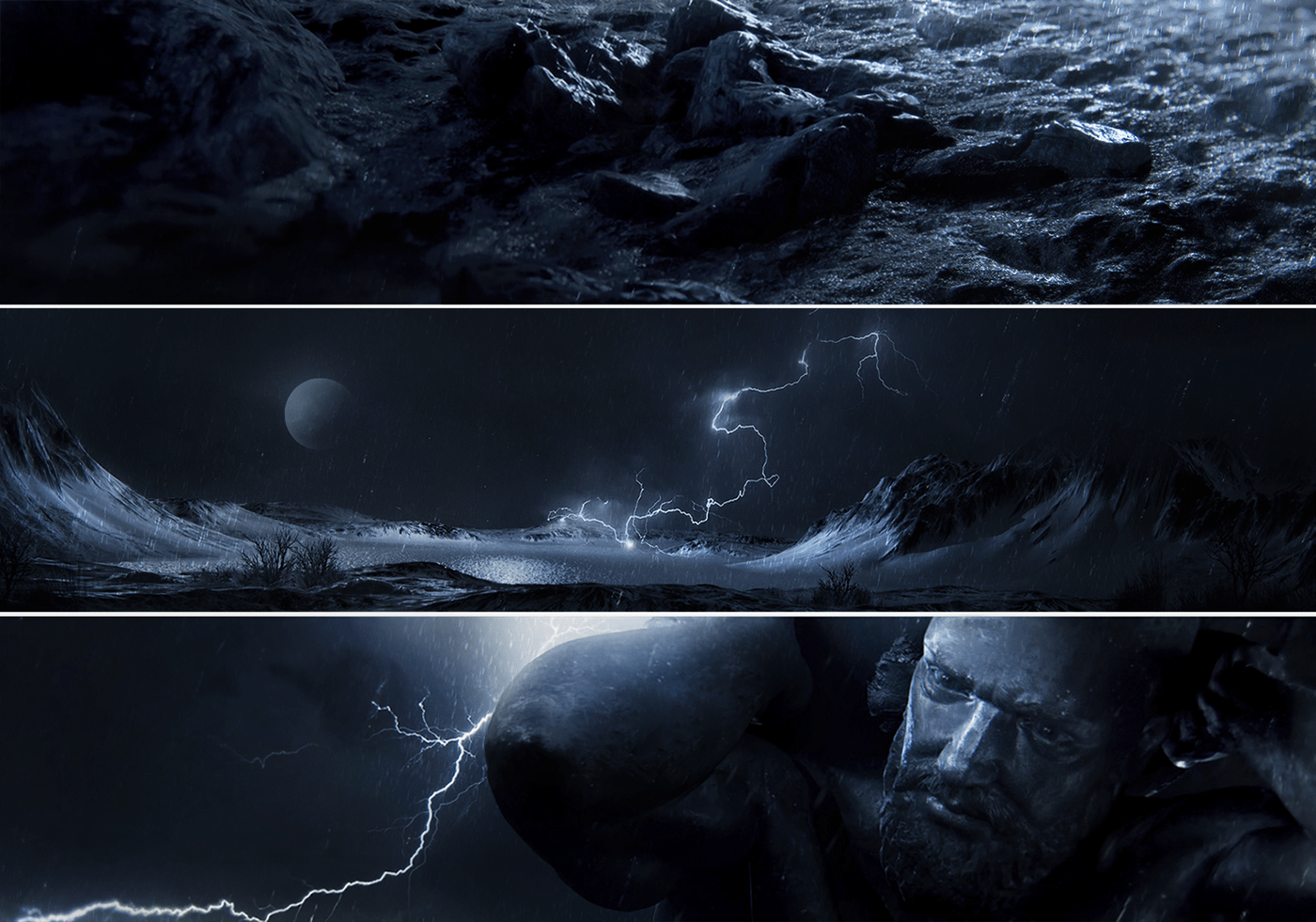
Introductory part. Flashback. The viewer is transferred from the museum to the distant past, when a person had to survive without any aids, and move on. We showed his thorny path using an image of raging weather. Lightning, rain, and slush did not stop the hero, and he continued to move on. To create the foreground, we used surface photoscans. The rain was created using Thinking Particles particle system. Lightning – footage implemented at the stage of compositing

The idea to show the planet made of stone was an intriguing visual decision for us. We wanted to focus viewer's attention on this image. We also decided to use the Earth as an element presented in three time phases (past, present, and future), executing different types of visualization in accordance with the time
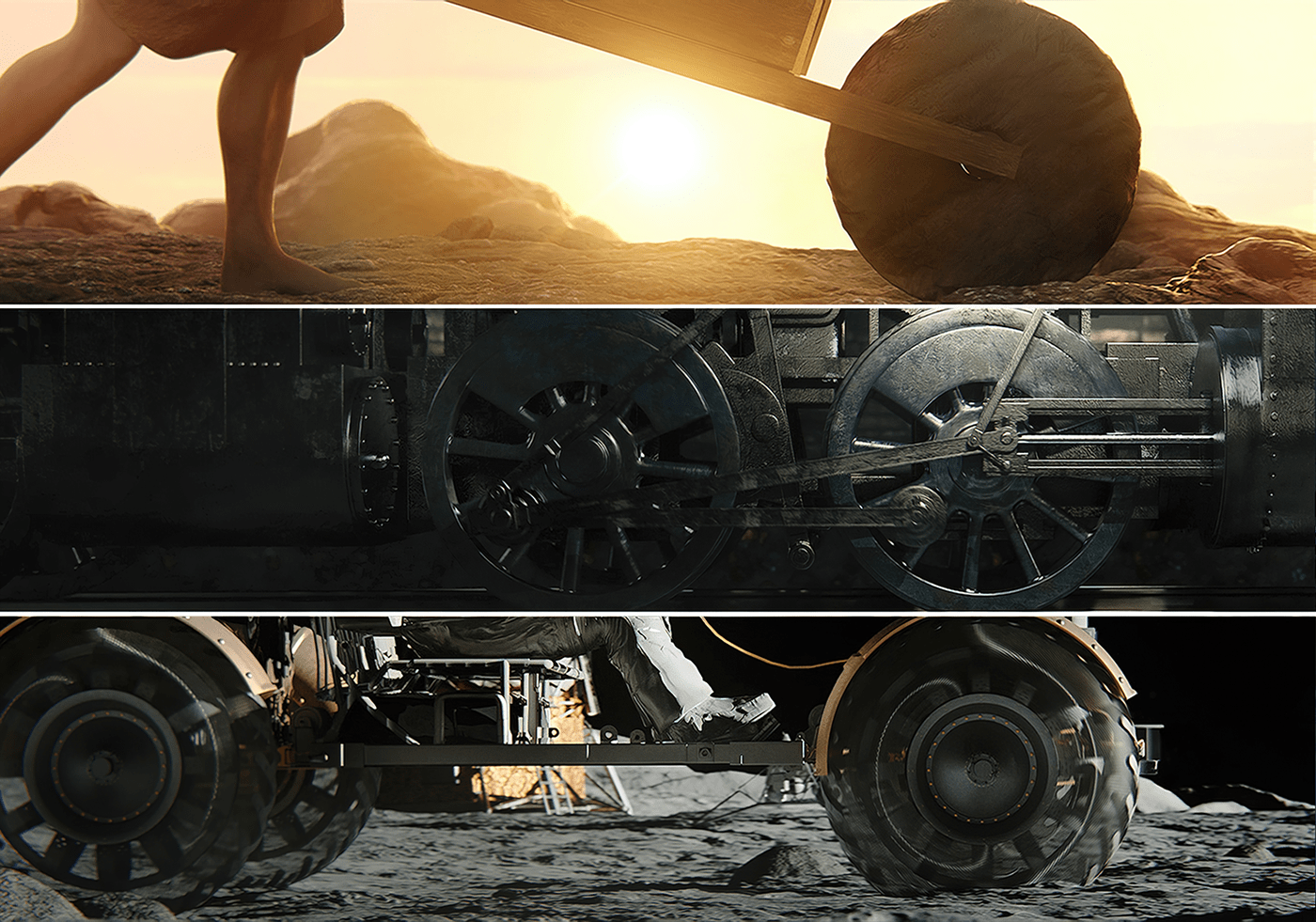
As soon as we received a job offer, one of the first ideas born in the studio was to demonstrate the evolution of the wheel mechanism through the events of world history. Firstly, it is a powerful symbol, which partially reflects the technological revolution and demonstrates the development of transport. Secondly, the wheel has a simple form, and with the use of computer graphics, when we design each scene from scratch, it helped us to create shots that looks similar in composition. This, in turn, allowed us to make clean montage cuts
While making research for this part we found inspiration in the short film called “A short History of the Wheel”, directed by Tony Hill. We chose five important in our opinion epochs and variations of wheel usage and sent them into production

After the final historical scene with a lunar car, we shift to the planet view, made in a realistic form. This way we have a transition from the "Stone Age" to the present time. This is where the new part of the video begins

The main focus in this part was the visualization of the complex infrastructure of the transport industry and the scope of work of its representatives. Here we illustrate three important theses of the work of the forum participants: services used by the majority of people in our vast country, the development of transport products and the daily delivery of megatons of cargo

The road is an integral part of the transport industry. In this shot, we have focused on multidimensional composition. The viewer's gaze goes along the stones on the side of the road, switches to a moving truck, highway and ends with a city panorama. Throughout the entire project, we tried to use cinematographic techniques and move away from the usual inframe montage
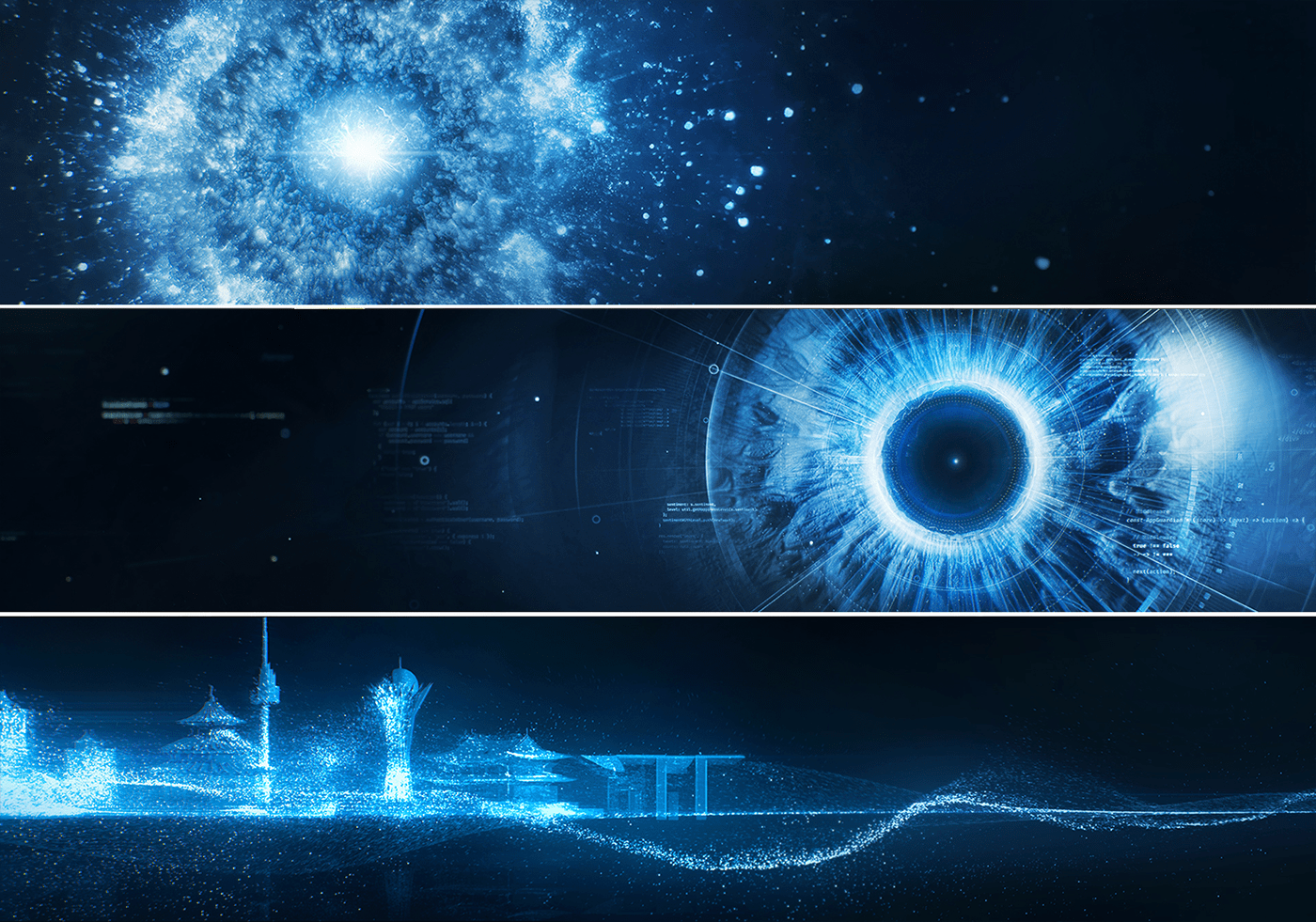
We decided to divide the time stages with transition shots. The digital style for this visualization was chosen so that the division parts became more obvious to the viewer. It also also created a visual skeleton for the video, as if stories unfold within its framework. Furthermore, these shots take on another task – to dilute the video with classic motion design
In these shots we seems to be in a kind of dream, the images here are vague and nebulous. To create the particles that form the images from the script, we used X-Particles and Trapcode Particular

To create a digital version of the planet, we've brought together various assets and passes of the Earth. One of them was OSM Node Density Map by Martin Raifer, who kindly provided the 2019 version for us. We combined the tiles in Cinema 4D via Mograph Multi Shader and Mograph Cloner. Next we converted the map from Mercator to Equirectangular projection. The Flexify 2 plugin for Adobe PS helped us with this. We exported it in cube mode to bypass the 30.000-pixel limit. Then we applied the resulting texture files to the corresponding sides of the cube in C4D and rendered the frame with the Redshift Spherical Camera to get a single Equirectangular projection
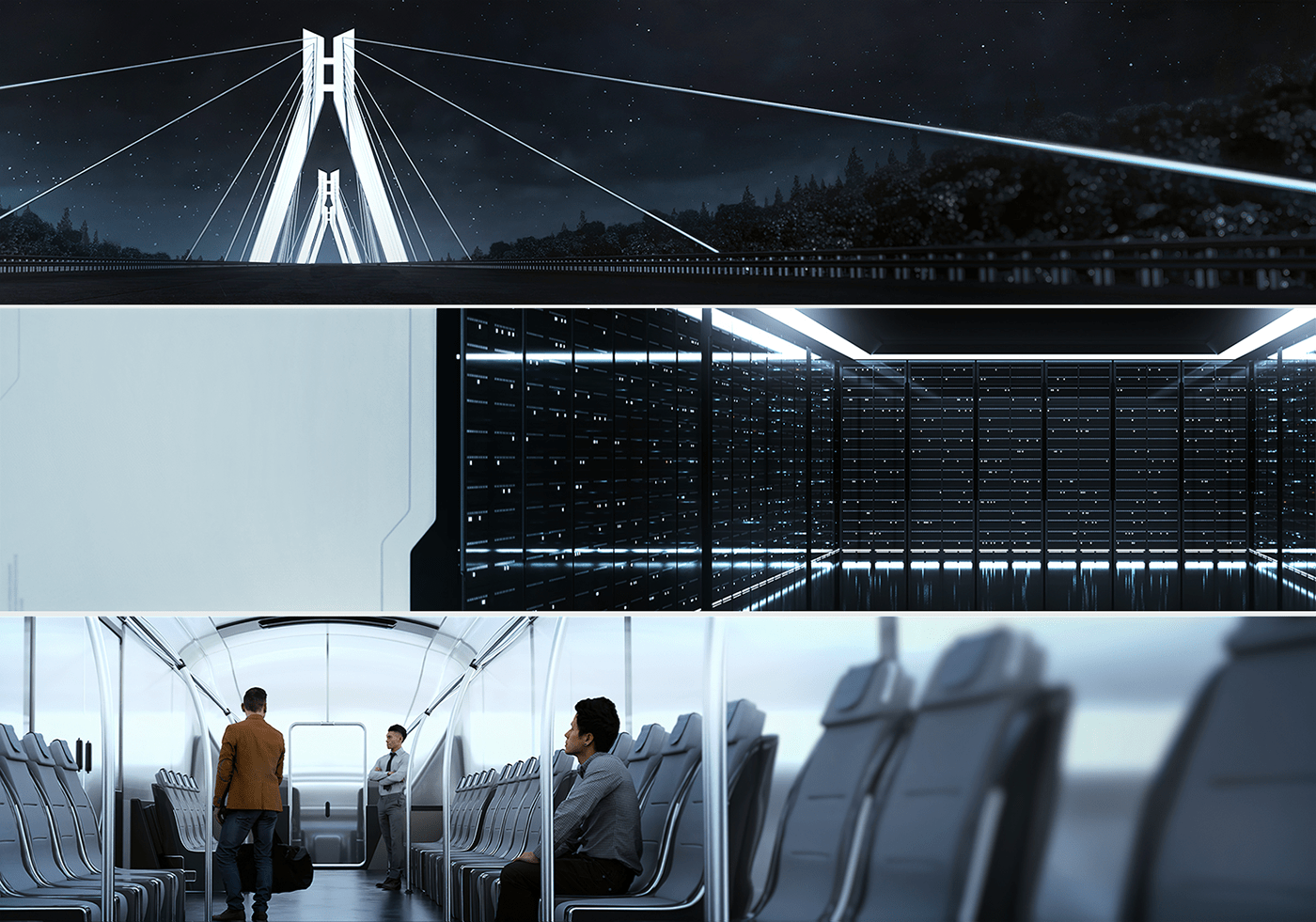
In the third timeline part, the viewer finds himself in the future, which the forum participants are striving for. After a difficult past and with current problems solved we all moving to a bright and comfortable future filled with innovations in the transport industry
To represent the innovation, we decided to take the image of the train of the future as a metaphor for the transport industry. this central element we built the narrative in this part. Having the train concepts prepared and having them approved by the client, we decided to show its factory construction as well as the highway journey and the interior comfort
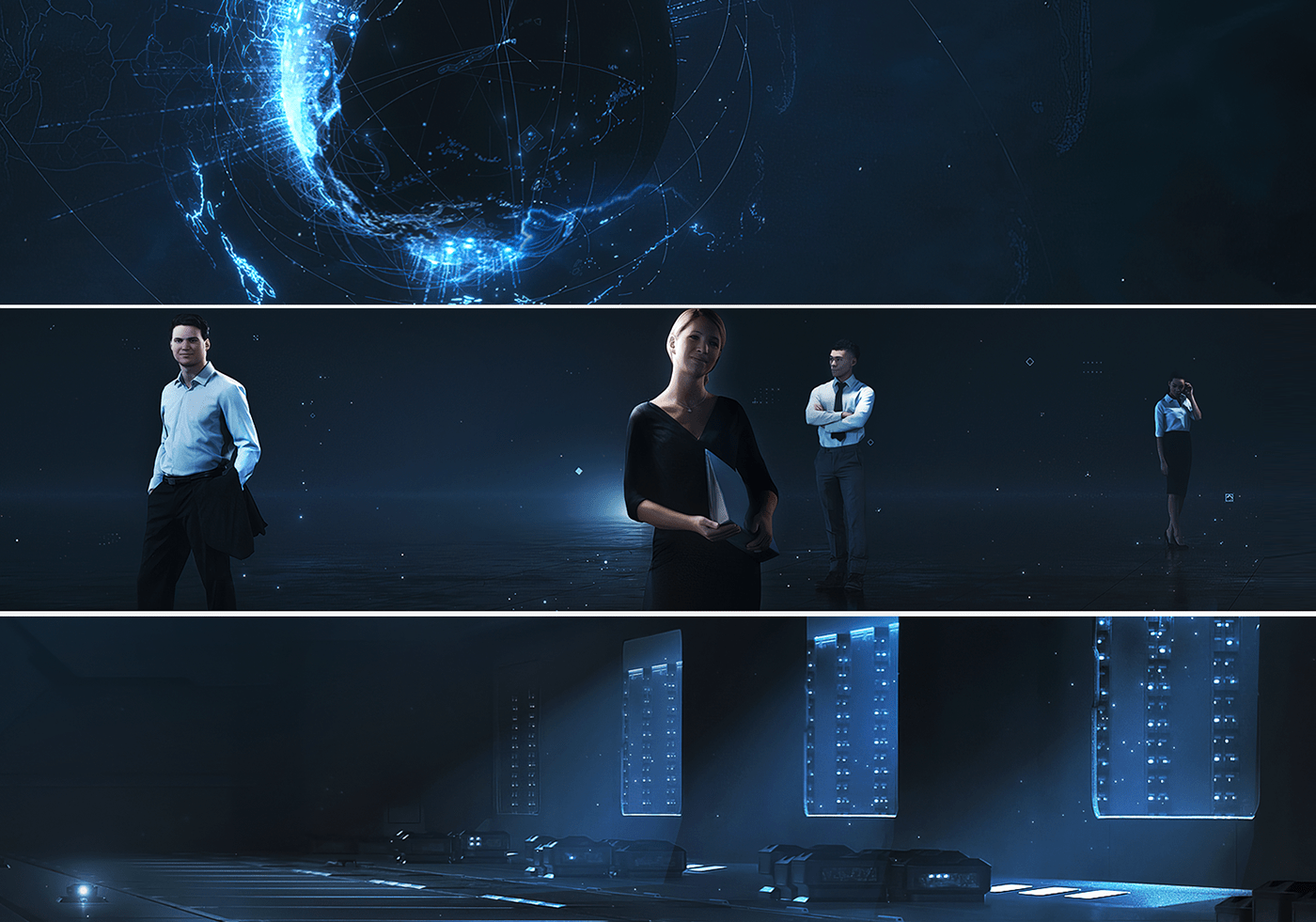
As we passed through the entire timeline, we send the viewer to the abstract locations of the final stage. Here we merge the transition visualization style, taking the color of digital particles, with the classic visualization from the previous parts in order to even closely connect the entire video. This decision connected the final scenes with transitions into a single part, which passed through the narrative, parallel to the main timeline

In the final shot, we fly through the corridor of one of the empty workshops. We are stopped by pillars that rise from under the floor, forming an energy field between them. It displays the event logo – this is where our short stop on a long journey will take place, a journey that is just beginning for everyone
Behing the Scenes
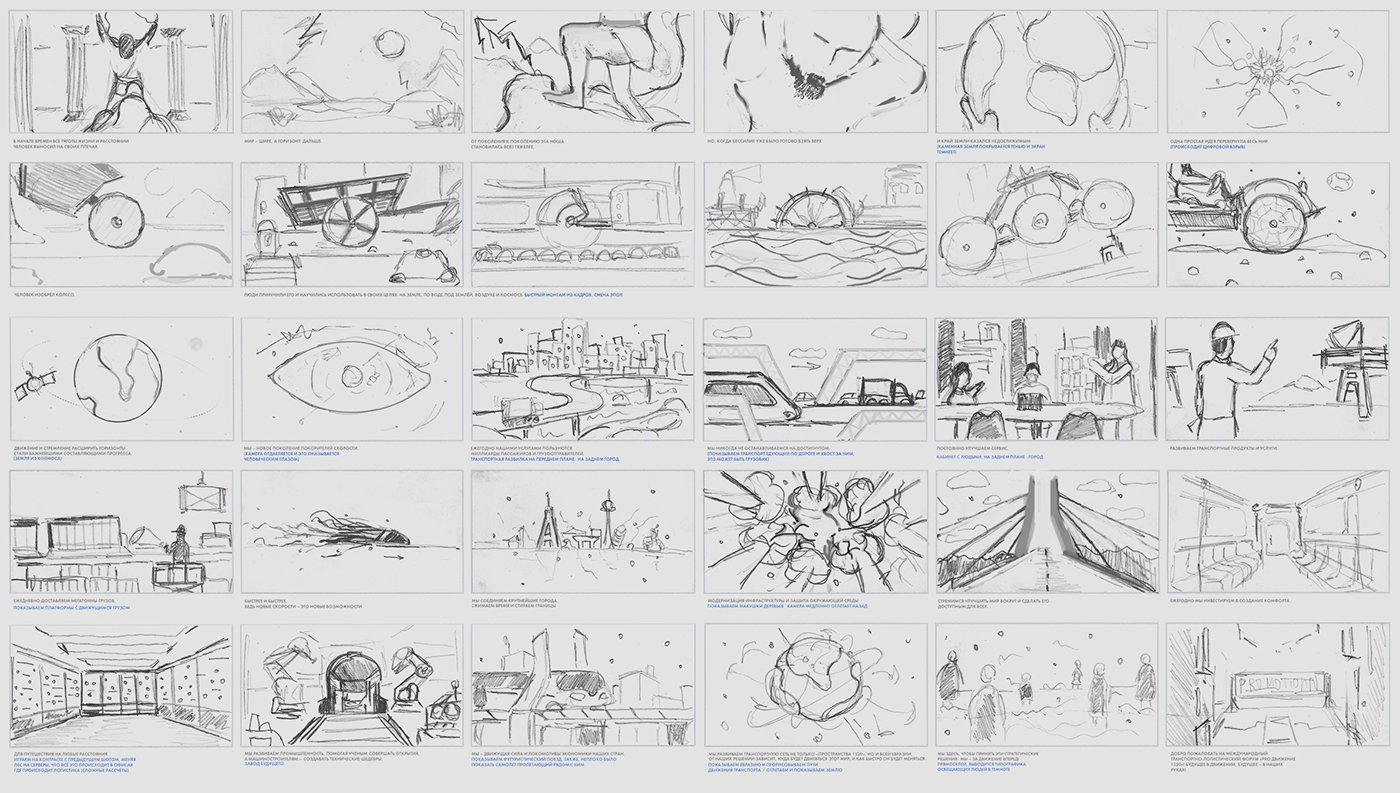
Storyboard
Like every other of our projects, we started this work with a storyboard. As a rule of thumb, At the very beginning we was concerned about the logic of the story and the central structural image, which should bear the main semantic load. Specially for the presentation we've cleaned up the storyboard by removing redundant elements. The original version had a lot of photo references and text designations (working notes)

Timeline
The client had set us a task - to create an introductory video, which will reflect the importance of both the event itself and the transport industry as a whole, touching the purpose which the guests have gathered along the way. In order not to create chaos in the structure of the narration, we decided to divide the video into three main parts and group them by time intervals:
In – entry to the ancient time with a metaphor of a person overcoming obstacles
Past – montage of the events of world history shown through the mechanism of the wheel as a symbol of the transport industry
Present – the story of the current achievements along with the backdrop scenery of industry-related sights
Future – goals and objectives for the participants, which are aimed at achieving a brighter future
Out – the conclusion with futuristic scenery
Separators – transitions between the main parts
Separators – transitions between the main parts
This way we've obtained a linear structure affecting everything the client expected from us
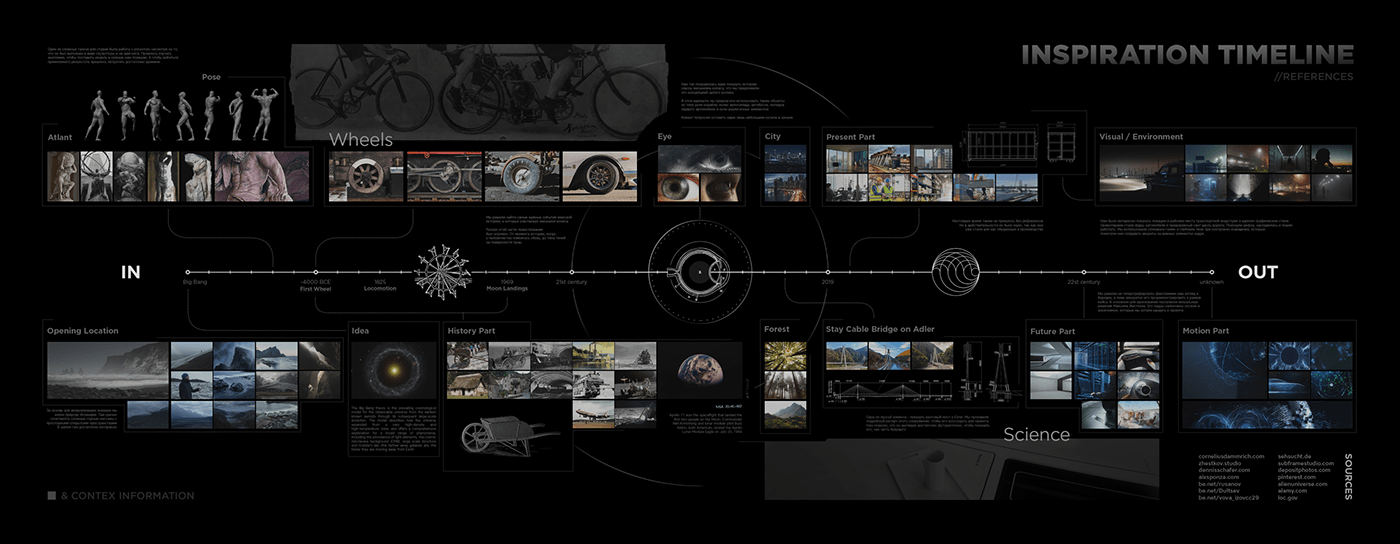
Research
After approving the concept and drawing the storyboard, we began to examine the material in details in order to fully understand the scenes we needed to create. At the same time, we've been gathering lists of necessary models, counting the production time and laying down the amount of detail the scenes needed, while also looking for visual solutions and key references for inspiration. In the process, the collected material served as a support for explaining how the final result will look like to the client
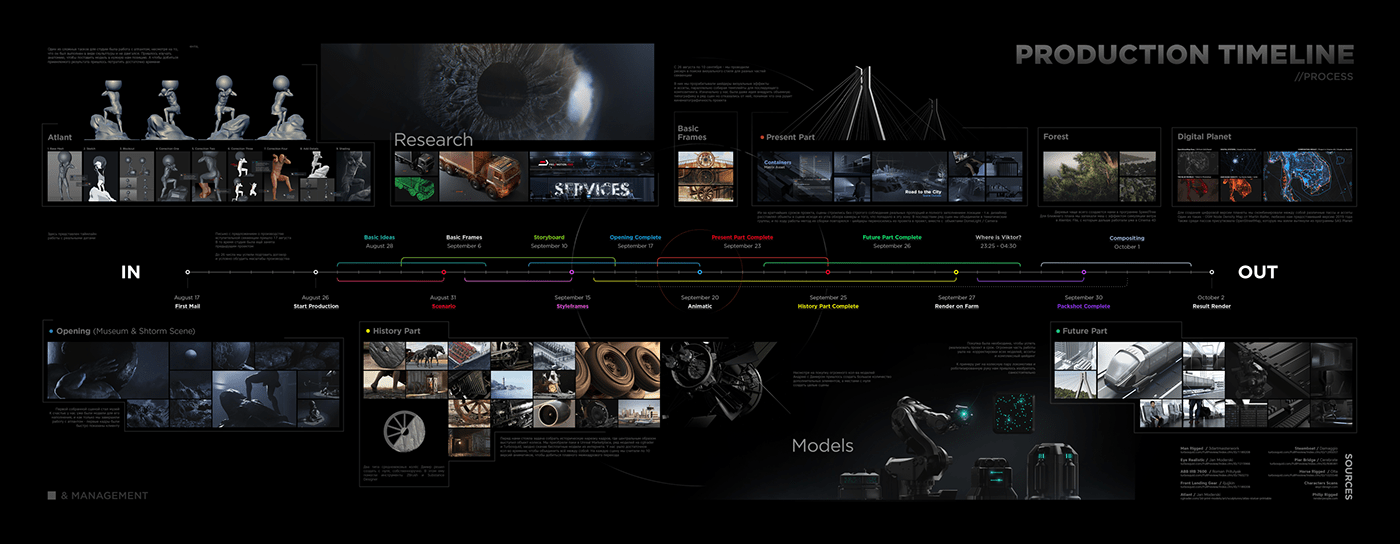
Process
The image above shows a detailed timeline of work. All production took exactly one month. In order to complete everything in time on our own, we had to purchase most of the models. This allowed us to concentrate on clean editing (~10 animatics for every shot) and fill the scenes with tiny details while also creating micro-animations in shots. For the rendering of all graphics, we used the YellowDog Render Farm and GPU Render Farm "F1". The software we used were Cinema 4D, Zbrush, Redshift Render, Houdini FX & Adobe After Effects
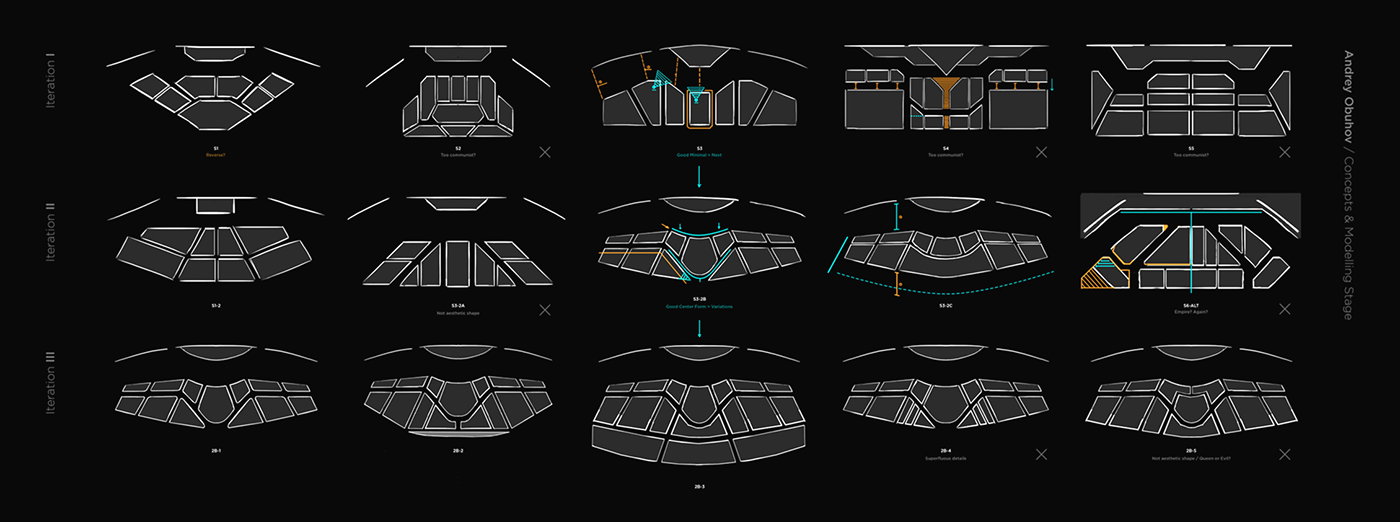
Stage Creation
Most of our work is shown at closed events, and we never get footage from these shows. This time it annoyed our team a lot, and we decided to direct this video ourselves
Andrey Obukhov created the concept of the hall (based on the actual dimensions of the site and the number of screens) and executed a multi-camera “shooting” of our work. We are glad that we can, though artificially, show you how it looks and we hope in the near future, we will have an opportunity to record real footage of an event
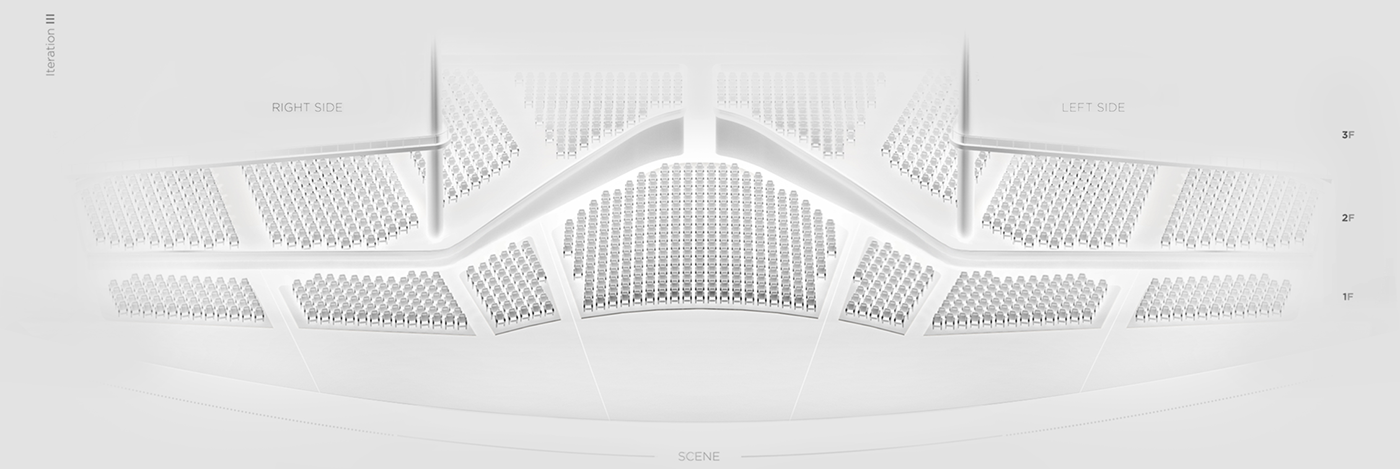
.

